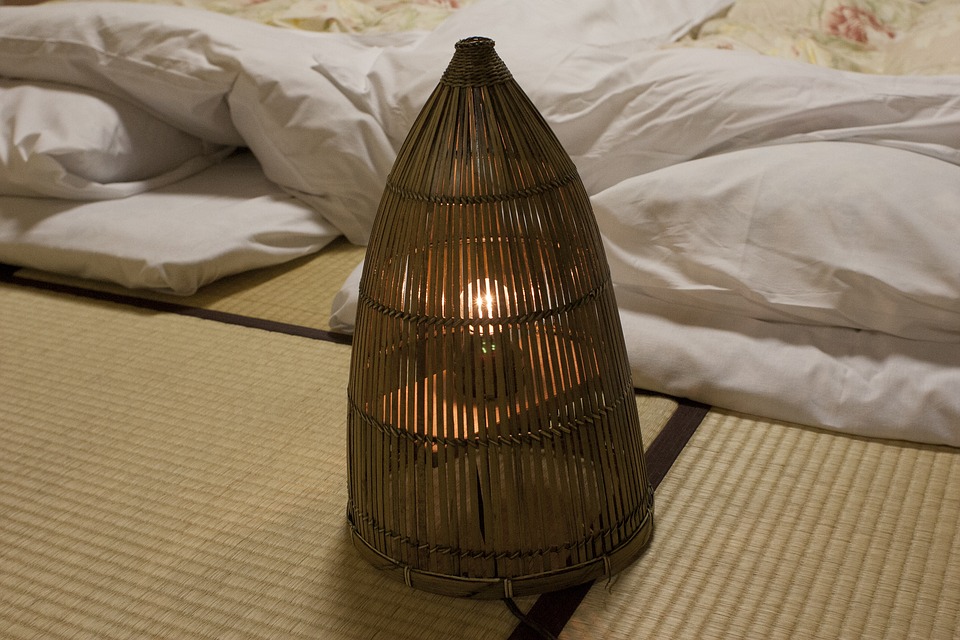Once you’ve got your Shiatsu qualification, you’re all fire and flames. And off we go for the adventure! You want to provide as many treatments as possible and be successful. However, if you don’t want to fall flat on your face at the start of your business, it’s wise to take the time to think things through and to avoid the most common pitfalls. Here’s a short, non-exhaustive list that’s always good to know. This article is intended for practitioners starting out on their own.
1. Not taking out a professional liability insurance policy
When you work as a Shiatsu practitioner, whether you like it or not, you’re accountable for what happens in your office. From the front door to the tatami, anything that happens to your patient will be your responsibility. The same goes for any unwanted post-treatment effects. Bear in mind that, although Shiatsu is generally a trouble-free technique, any pain or discomfort your patient experiences after a session will be your fault. A technical error during the treatment can also cost you dearly, or even an accident, such as falling down a flight of stairs. That’s why it’s vital to take out professional liability insurance, if possible in the paramedical field. There’s a long list of insurance companies offering this, so there’s no need to advertise here. But be sure to check out the forums and, above all, the coverage offered by the insurance company.

2. No legal status
As long as you’re a student, you can afford to give shiatsu to everyone, usually to the pleasure of friends and family. But when you turn professional, everything changes. Asking for money means creating a structure that gives you a status. Rushing into this is not a good idea. Compare the different possibilities that exist: company, association, self-employed (complementary), micro-business or freelance under a payroll company, everything is possible. To make the right choice, you need to ask yourself a number of key questions:
It’s often a good idea to start “small”, so before setting up your own multinational Shiatsu company, there are a few steps to take and questions to ask yourself:
- Will I be working alongside my main professional activity?
- If so, can I have a self-employed business on the side? (Is this authorized by my employer? = check your work contract).
- Will I need to make any investments? (yes = independent status, perhaps via an association, no or little = “”auto-entreprise” for France)
- Do I need to make a budget forecast? = yes, even if you’re not planning to take out a loan, if you’re not starting up a company, it’s always wise to make an expenses/income forecast to see where you’re going, if you need a little funding or if you need to tap into your reserves.
- Do I need an accountant? = Yes, if only for a single appointment to help you ” structure ” your business.
3. Not investing in your workplace
Your workplace is a reflection not only of your personality, but also of the standard of service you provide to your patients. If you practice on a table in the corner of a kitchen, with a dog racing around, it’s not going to fly. The atmosphere of the place, the sober but tasteful decor, the “cocoon” feeling, all these things will make your patients eager to come back. You should also have a door nearby that gives access to a toilet with a sink, or even better, a bathroom. Hygiene is important, both of the premises and of your hands. Don’t compromise on cleanliness. In the most professional practices, there’s also a designated waiting room where you can leave your belongings or read while waiting for you to finish your previous appointment. All this represents an initial investment, but your patients’ perception of the place will greatly contribute to your success.

4. Not publishing your rates
Whether on your website, by phone, by email or in your waiting room, you must always communicate your rates clearly. Failing to display your rates is an infringement in accordance with the law. The Tax Authorities will have a feast if you don’t. If you’re using social networks or a website, this is the best place to show them. Don’t forget that Shiatsu is a customer service, a business transaction just as much as a health treatment or a relaxation service. Just like a business or a doctor, you must leave no room for interpretation.
5. Not testing different work supports (futon, tatami, massage table)
Shiatsu is generally taught at school on the floor or on a massage table. But this doesn’t mean that this is the best suited support for you. There are many different types of Shiatsu table. Think Shiatsu! You’ll need to find a solid one with a good width, as you may have to climb on it with the patient to perform certain techniques. On the floor, you can choose between a cotton futon, a folding straw tatami or a folding polyester mattress. For the futon or mattress, remember to cover your floor with another layer. Fixed straw tatamis, which form a layer on the floor, are made in France and don’t cost much. An investment in these tatamis will give you a beautiful rendering and will last for years.

6. Not building up an address book of healthcare professionals
Nobody is an expert, and it’s always good to have the support of other health and paramedical professionals. It is therefore advisable to create a small address book to refer medical cases that do not fall within the scope of Shiatsu, or to enlist the help of a physiotherapist, osteopath or psychologist. This doesn’t mean leaving the patient, but often referring him or her temporarily to another person to get through a stage, and then continuing with him or her later. For example, in the case of a lumbar problem, there’s nothing like having a session or two with an osteopath or chiropractor to unblock the vertebrae. Once that’s done, it’s back to Shiatsu. Having a referral doctor is also an excellent idea. With shrinks, working on the mind at the same time as the body can cut treatment time in half. It is therefore highly advisable to establish good relations with a whole range of health professionals. The image of reliability and responsibility you project will play in your favor.
7. Overloading yourself with work whenever there’s demand
When you’re successful, you try to take on everyone who comes into the office. But beware of overworking. Like all human beings, practitioners have their limits. That’s why you need to know how not to take on too many people every day, how not to overrun evening working hours, and how to keep time for yourself, your hobbies, your family and friends. But above all, you need to take the time to rest and regenerate, and take vacations and weekends off to get some fresh air. If you don’t, you’ll burn out and be forced to stop practicing your passion, which would be a pity both for you and for your patients.

8. Not exercising your body and mind
Once you’re out of school, there’s a tendency to lose focus on bodywork. If teachers spend time in every class on warming up, stretching, strengthening and working the body, there’s a good reason. The practitioner’s entire body is his or her working tool. It must therefore be constantly looked after, cared for and exercised in order to keep it in good shape and cope with the heavy weeks of work. Basically, the body needs three types of exercise: strengthening, loosening and relaxing, and the physical activity that makes it sweating and flushing out toxins. In addition to this mix of exercises, we recommend working the mind to stay calm, grounded and emotionally well-balanced. Meditation is by far the best tool for this, as it “cleanses” the mind, relaxes and strengthens it at the same time.
9. No further contact with the community and teachers
You’ve left your school, your teacher and your classmates behind, and now you’re alone with your patients. The shiatsushi profession can quickly become a lonely one. In the long run, this is not good for the mind. Above all, we’re social animals. Even if you see a lot of patients every day, it’s not the same as maintaining a link with the shiatsu community. There are lots of groups for this on social networks, but the best thing is to keep in touch with the people who studied at the same time as you. And the link with the teacher is a little treasure to be preserved, for asking questions and clearing up doubts. After all, if the school takes you up the first step on the Shiatsu path, there are still many others to climb. Keeping a guide throughout the years prevents you from getting lost, doubtful or bored.

10. No longer training yourself
This is probably the worst mistake you can make. When you follow a Way, study never ends. You can read lots of books, but there’s no substitute for personal contact, exploring or revising at a training course or seminar. At least twice a year, we need to go back to being students who know nothing and rediscover the joy of letting ourselves be guided. Ongoing training is an obligation for most Shiatsu organizations. The most advanced teachers don’t hesitate to go and see colleagues to learn new things or another way of approaching a well-known subject. There’s always more to learn. What’s more, ongoing training enables us to get off the beaten track and confront other ways of doing things. Shiatsu is rich in a multitude of styles, each with something interesting to teach. This allows you to step out of your comfort zone and avoid believing you know it all and ending up by criticizing others. On the contrary, ongoing training both enriches and humble us. No one holds the whole truth, and Shiatsu remains an immense universe, full of possibilities.
Happy beginnings!
Author
- FAQs - 12 August 2025
- A Milestone: The 2025 ESF Symposium in Brussels - 24 March 2025
- Terésa Hadland interview: Shiatsu at core - 25 November 2024
- Book review: “Another self” by Cindy Engel - 30 September 2024
- Austria – 24-26 Oct. 25: Master Class in Vienna – Shiatsu and martial arts - 20 August 2024
- Interview with Wilfried Rappenecker: a european vision for Shiatsu - 15 November 2023









